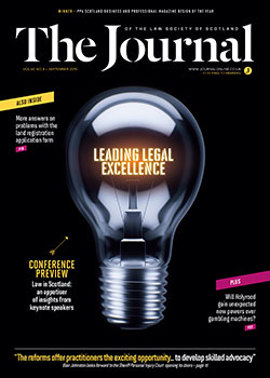When cash just isn't good enough
We all need to hold cash, and none more so than charities and not-for-profit organisations. However in this new lower-for-longer interest rate environment, cash is proving a drag.
Seeking higher interest rates is a time consuming chore with nominal reward. An interest rate hike in the UK is looking more unlikely for 2015. Even with a rate rise, rates will continue to remain low in comparison to historic rates. Hardly positive news for charity trustees responsible for making asset decisions, especially when financial institutions neither wish to attract large cash holdings nor, consequently, reward depositors.
Charities and NFP organisations familiar with holding large cash reserves will have to rethink their strategies or risk eroding assets through inaction.
Charity trustees have a duty of care with regard to charity assets, whether those assets are in the form of cash or investments. Remaining “prudent” and avoiding investment risk by holding significant assets in cash, may no longer meet this duty of care.
Gauging how much cash should be held is key. Understanding the flow of expected income and outgoings over the immediate, medium and longer term is important, although this can be difficult to estimate accurately, which is where contingencies are important.
What is your policy?
Charities based in Scotland may or may not have an investment policy statement in place. If not, creating an IPS with professional guidance from an investment adviser should take priority. Trustees with an IPS in place would be well advised to revisit those statements on a regular basis to ensure the investment principles continue to meet the needs and objectives of the charity.
An IPS will contain clear objectives of what is necessary for the trustees, in their best judgment, to deliver the charity objectives over an appropriate timescale. It will also take account of their attitude to risk relative to commitments, and consider stakeholder views such as those of donors, beneficiaries, employees, etc.
Having an IPS will determine an appropriate strategy and asset allocation. For many charities there could be a twin objective of achieving long term growth, at least in line with inflation, and reasonable annual income. In addition there may be ethical criteria which must be met. The portfolio can then be created using a range of assets from cash, bonds, equities and other types of assets to create a well diversified portfolio which meets the principles outlined in the IPS and is aligned with economics conditions.
It may be that cash is still the best solution for smaller charities or those with short term spending requirements. However cash comes with its own risks. Before the banking crisis, we rarely discussed liquidity, whereas tier 1 capital ratios are now public information.
Achieving targets
A positive from the financial crisis is that it has triggered a rise in absolute return funds and portfolios based on targeted returns. Many trustees will have torrid memories of 2008-09, as markets crashed and economies crumbled. Investment managers have since recognised that an element of security and confidence is a key priority for many investors: growth without the volatility; rewards without onerous risk – that is really what trustees are seeking. As such we have seen the introduction of targeted return funds, which target specific growth objectives combined with relatively low volatility, and strategies aimed at capturing upside in bull markets and limiting downside when markets change direction. Over the longer term, targeted return portfolios are unlikely to produce growth on the same level as a diversified equity-based portfolio; however, the ability to include some form of downside risk far outweighs the potential shortfall in growth for many charities.
For smaller charities, part cash and part targeted returns may be a suitable investment strategy. For larger charities, a combination of cash, targeted return and a bespoke portfolio of investment holdings may be a more appropriate solution.
The key is understanding the purpose and longevity of the assets. Are the trustees able to ringfence charity assets for longer term investment and complement this with targeted return for short to medium term assets, and cash of course for short term holdings? The key is to plan ahead, understand the expected asset flow over the next few years, include contingencies, and ensure the plans are revisited at every trustee meeting as a reminder to the trustees of why plans are in place and whether changes need to be made.
In summary, when creating financial plans and making investment decisions, effective decision-making is important and decisions should only be taken by persons with the skills, information and resources necessary to take them effectively. If trustees do not have the necessary skills both individually and collectively, professional guidance should be sought and decisions on asset allocation and portfolio creation delegated to appropriate investment managers – even if at the end of the process the ultimate decision is to remain in cash!
In this issue
- Sham marriages v Sham interviews: which is the greater evil?
- A trusts law for the modern era?
- When cash just isn't good enough
- Un voyage en vaut la peine*: SYLA does France
- SYLA ends season on a high
- Appreciation: John Henderson
- Reading for pleasure
- Opinion: Mohammed Sabir
- Book reviews
- Profile
- President's column
- People on the move
- Application forms: should the seller adjust?
- When sharing matters
- After the launch
- Game of strategies
- Broken promises
- Charity legacies: the 10% conundrum
- Another "Whose money?" case
- Barrister barred
- Rearranging the family ties
- Belief in the system
- Living by the code
- The sky's the limit
- Unfinished business
- Law reform roundup
- Appreciation: Joseph Beltrami
- LBTT: what does it mean in practice?
- For those of a certain age
- Claims: trending?
- Ask Ash
- A man for all reasons
- The "TER approach"






